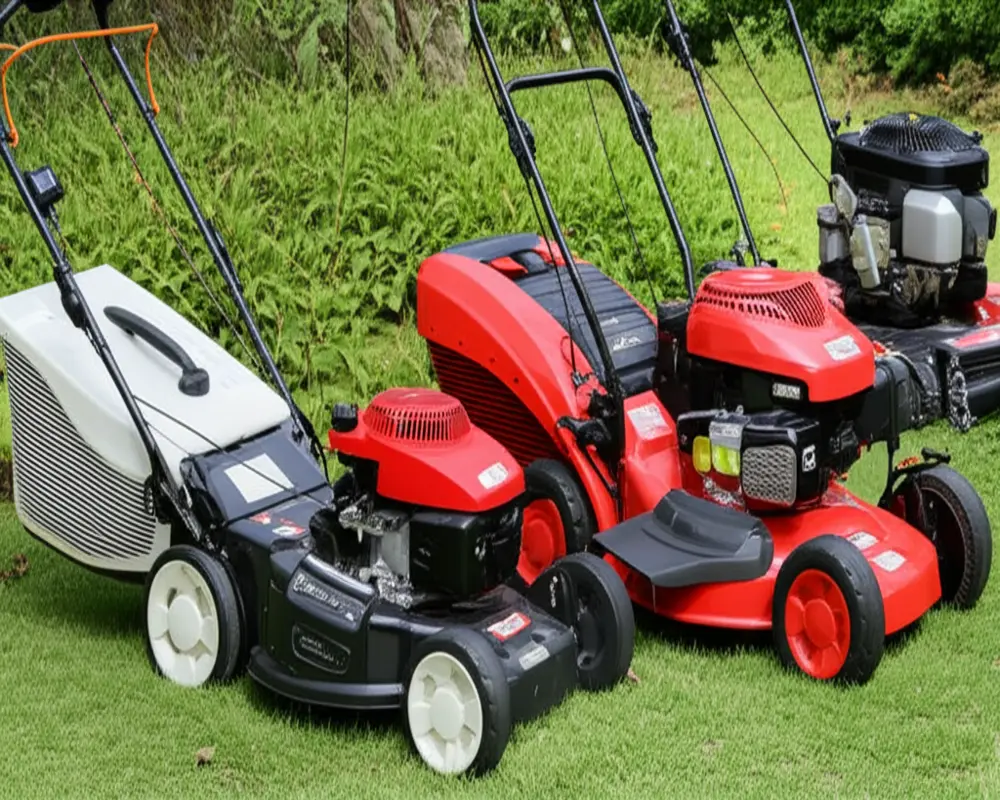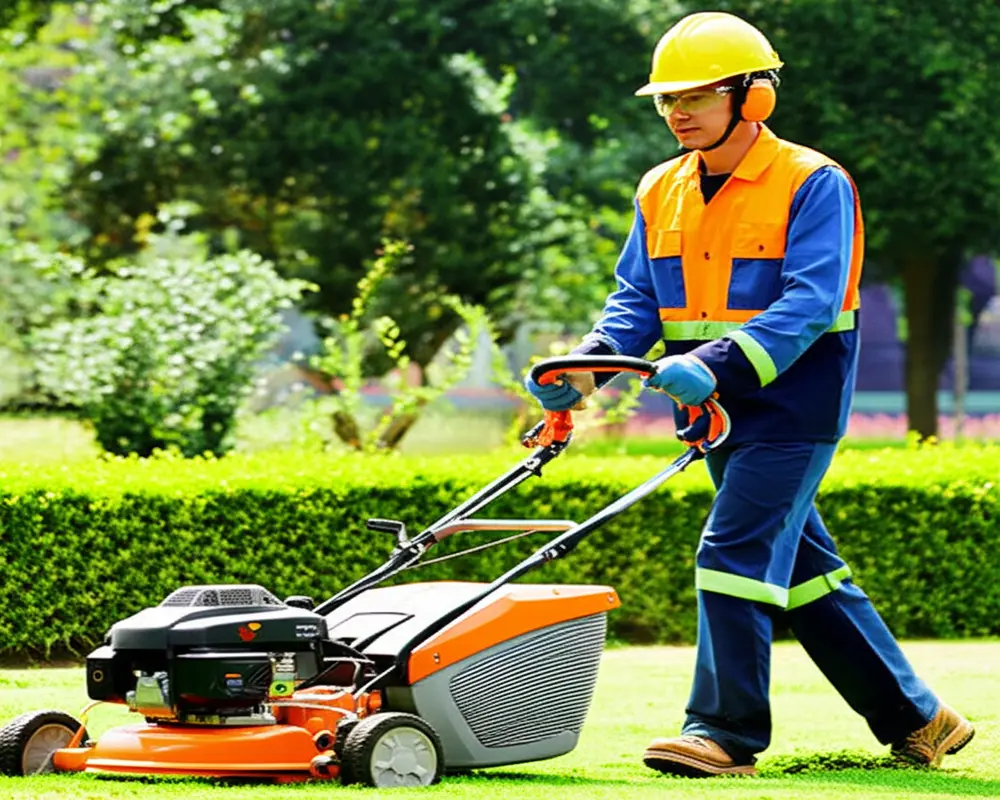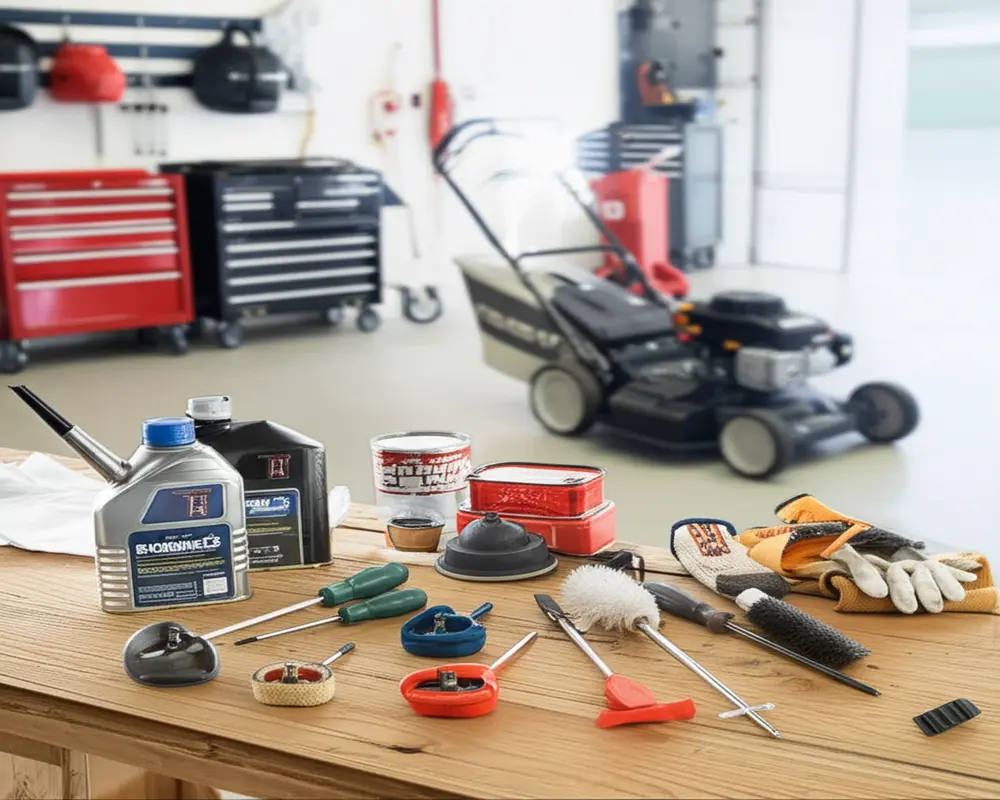Walk Behind Mower Guide: Expert Tips for Selection & Maintenance
Achieving a pristine lawn begins with selecting the right tools and knowing how to use and care for them effectively. This walk behind mower guide for 2025 provides deep insight into mower types, buying considerations, safe operation, maintenance, troubleshooting, and expert advice to empower both novice and experienced lawn enthusiasts.
Thank you for reading this post, don't forget to subscribe!I. Introduction: Your Path to a Perfect Lawn Starts Here
A walk-behind mower is a lawn mower designed to be manually pushed or self-driven by the operator walking behind it. Its core purpose is to provide efficient grass cutting for residential or commercial lawns, especially those where maneuverability and precision are important. Unlike riding mowers, these offer greater control and are ideal for small to medium-sized yards.
Choosing a walk-behind mower offers several advantages: they tend to be more affordable, easier to maintain, and provide better access around tight spaces such as flower beds or garden paths. Additionally, their size and weight make them more manageable for many users compared to bulky riding alternatives.
This guide aims to be a comprehensive resource to help you understand the different types of walk-behind mowers, key features to consider when purchasing, tips for safe and effective operation, essential maintenance practices, and troubleshooting common problems.
II. Decoding Walk-Behind Mower Types: Finding Your Match
The variety of walk-behind mowers can be broadly categorized by their propulsion systems and power sources, each suited to different lawn sizes, terrains, and user preferences.
Propulsion Systems
Push mowers are manually operated and are best suited for small, flat lawns. They are budget-friendly and lightweight, requiring physical effort to move, which some users appreciate for the exercise it provides.
Self-propelled mowers have a built-in drive system, making them easier to use on larger or uneven yards. They come in three main types: single-speed, variable speed, and all-wheel drive, offering varying levels of traction and control. Self-propelled models reduce operator fatigue, especially on slopes or rough terrain.

Power Sources
Gas mowers deliver robust power and extended run-time, making them suitable for large lawns and heavy-duty use. They require regular maintenance such as oil changes and fuel management. However, they emit more pollutants and are noisier.
Electric mowers are quieter, cleaner, and easier to maintain. They come in two categories:
- Corded electric mowers offer unlimited run-time but are limited by the length of the power cord, restricting mobility.
- Cordless (battery-powered) mowers provide freedom of movement and ease of use. Battery capacity and charging time are key factors to consider.
Cutting & Discharge Options
- Bagging: Collects grass clippings for easy disposal, ideal for a clean lawn appearance.
- Mulching: Finely chops clippings and returns them to the lawn as natural fertilizer.
- Side discharge: Ejects clippings to the side, useful for tall or dense grass.
- 3-in-1 systems: Combine bagging, mulching, and side discharge for maximum versatility.
Choosing the right propulsion and power system depends largely on your lawn size, terrain, and personal preferences. For example, a small urban yard may benefit from a corded electric push mower, while a large sloped yard might require a gas-powered, self-propelled model.
III. Key Features & Buying Considerations
When selecting a walk-behind mower, it is essential to align the mower’s features with the specific demands of your lawn and personal comfort.
Lawn Size and Terrain: Deck size is crucial; larger decks (around 21-22 inches) cover more ground quickly, suited for bigger lawns, while smaller decks offer better maneuverability. For uneven or sloped lawns, self-propelled mowers with good traction are recommended.
Performance & Build Quality: Consider engine power for gas models or battery specifications for electric ones. Deck materials like steel provide durability but add weight, while aluminum decks are lighter but may be less robust.
User Comfort: Handle ergonomics can reduce fatigue during prolonged use. Features such as easy-start mechanisms (electric start or recoil), quality wheels for smooth movement, and lighter mower weight contribute significantly to user satisfaction.
Advanced Features: Blade brake clutch allows quick blade stopping without shutting off the engine, washout ports simplify cleaning, and smart tech like Bluetooth connectivity or app control enhance convenience.
Budget: Balance the initial cost with long-term maintenance expenses. Warranties and brand reputation offer assurance of product reliability and service support.
IV. Top Recommendations & Best Picks (By Category)
Based on expert reviews and user feedback, here are some top picks for various categories:
- Best Walk-Behind Mowers for Small Lawns: Lightweight corded electric push mowers with compact decks.
- Best Self-Propelled for Large Yards: Gas-powered models with variable speed and all-wheel drive options.
- Best Battery-Powered Mowers: Cordless electric mowers with high-capacity lithium-ion batteries.
- Best Value Gas Mowers: Durable gas mowers offering solid performance at affordable prices.
- Premium Professional Grade Options: Heavy-duty mowers with advanced features for extensive use.
For detailed ratings and comparisons, visit Consumer Reports Walk-Behind Mower Ratings and The Spruce Walk-Behind Mower Buying Guide.
V. Operating Your Walk-Behind Mower Safely & Effectively
Before starting your mower, always run through a pre-mowing checklist: ensure fuel or battery is sufficient, check oil levels, and inspect the blade for damage or dullness.

Starting procedures vary: gas mowers may require priming and choke adjustment, while electric mowers usually have an easy push-button start. Always refer to the user manual for model-specific guidance.
When mowing, overlap your passes to avoid missed patches. Adjust cutting height according to grass type and season, typically between 2.5 to 4 inches. On slopes, mow across the incline rather than up and down to maintain balance and traction.
Safety is paramount. Wear personal protective equipment (PPE) such as sturdy shoes, eye protection, and hearing protection. Store fuel safely and never refuel while the engine is hot. Keep bystanders, especially children and pets, clear of the mowing area. Always turn off the mower before clearing clogs or adjusting the blade.
For comprehensive safety guidelines, consult the U.S. Consumer Product Safety Commission Lawn Mower Safety Tips.
VI. Essential Maintenance & Long-Term Care
Routine maintenance extends your mower’s lifespan and ensures optimal performance. After each use, clean grass clippings and debris from the deck and blades to prevent rust and buildup.

Engine care for gas models involves regular oil changes, spark plug replacements, air filter cleaning, and fuel system checks. For electric models, maintain battery health by following charging recommendations and avoiding deep discharges.
Sharpen mower blades at least once per season or when you notice uneven cuts. Balancing blades prevents vibration and wear on the mower. Also, inspect and lubricate wheels and check deck integrity.
When winter approaches, prepare your mower for storage by draining fuel or using stabilizers, cleaning thoroughly, and storing in a dry location.
For detailed maintenance tips, visit the Extension Service Lawn Mower Maintenance Tips.
VII. Common Troubleshooting & Quick Fixes
If your mower won’t start, check for spark plug issues, stale fuel, or clogged air filters. Uneven cuts often indicate dull or damaged blades or deck problems. Excessive smoke or abnormal noise may signal engine or belt troubles. Power loss or stalling can be caused by carburetor or fuel system faults. Vibration or bagging issues might stem from blade imbalance or clogged discharge areas.
Addressing these problems promptly will help maintain mower efficiency and safety.
VIII. Frequently Asked Questions (FAQs)
- How often should I mow my lawn?
- Generally, mow once a week during the growing season. Adjust frequency based on grass growth rate and weather conditions.
- What is the ideal cutting height?
- Most lawns thrive at 2.5 to 4 inches. Taller cuts promote deeper roots and drought resistance.
- Can I use car oil in my gas mower?
- Use only oil specified by the mower manufacturer, usually SAE 30 or multi-viscosity oils designed for small engines.
- Is it safe to mow wet grass?
- Mowing wet grass is not recommended as it leads to uneven cuts and clumping. Wait until the lawn is dry.
- When should I replace my mower?
- Consider replacement if repairs exceed 50% of mower value, if it’s unreliable, or if it no longer meets your lawn care needs.
IX. Conclusion: Your Confident Mowing Journey
Understanding the diverse types of walk-behind mowers, selecting one that fits your lawn and lifestyle, and following best practices for operation and maintenance will ensure a beautiful and healthy lawn. Prioritize safety, routine care, and timely troubleshooting to maximize your mower’s lifespan and performance.
With the knowledge shared in this guide, you are well-equipped to make informed decisions and enjoy a rewarding mowing experience.
For further gardening insights and expert advice on tools, visit our related guides such as garden spade rust prevention and hand cultivator expert interview.

